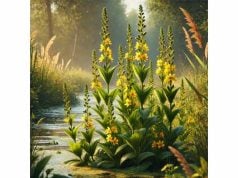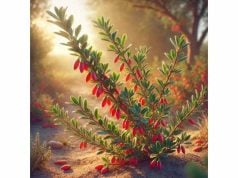
Lady’s Mantle is a revered herb celebrated for its time-tested healing properties and versatile applications. Rich in tannins, flavonoids, and phenolic compounds, it offers notable astringent, anti-inflammatory, and antioxidant benefits. Traditionally used to support wound healing, menstrual comfort, and gastrointestinal health, Lady’s Mantle also aids in soothing skin irritations and promoting overall wellness. Its unique bioactive profile underpins its use in teas, tinctures, and topical formulations. In this comprehensive exploration, we delve into the botanical features, phytochemical makeup, holistic health benefits, practical applications, scientific research, and common queries related to this extraordinary herb.
Table of Contents
- Botanical Insights and Distinctive Identification
- Phytochemical Profile and Bioactive Ingredients
- Holistic Health Benefits and Intrinsic Qualities
- Practical Applications and Safety Recommendations
- Research Breakthroughs and Scientific Evidence
- Frequently Asked Questions
Botanical Insights and Distinctive Identification
Lady’s Mantle, botanically known as Alchemilla vulgaris, is a perennial herb native to Europe and parts of Asia. It thrives in temperate regions, often flourishing in meadows, woodlands, and moist grasslands. The plant features uniquely scalloped, velvety green leaves that form a rosette at the base. These leaves, with their soft, rounded edges and deeply lobed structure, exude an ancient charm that has captured the attention of herbalists for centuries.
The inflorescences appear in late spring to early summer as clusters of small, yellow-green flowers. These blossoms, though modest in size, create a delicate display that contrasts beautifully against the lush foliage. The flowers typically lack showy petals; instead, their subtle coloration and simple structure complement the overall understated elegance of the plant.
Morphologically, Lady’s Mantle is distinguished by its fibrous root system, which enables it to survive in a variety of soil types—particularly in well-drained, slightly acidic to neutral soils. The plant’s resilience in nutrient-poor environments is attributed to its efficient nutrient uptake mechanisms and the high concentration of secondary metabolites within its leaves. This adaptive quality not only underpins its survival in the wild but also enhances its medicinal properties.
Historically, Lady’s Mantle has been integrated into folklore and traditional medicine. Its lush, protective leaves were believed to have the power to “mantle” or cover wounds, an image that contributed to its common name. Over the centuries, herbal practitioners have harnessed its astringent properties to treat cuts, abrasions, and other minor injuries. In addition, its gentle yet effective action in regulating menstrual flow and soothing gastrointestinal disturbances has made it a staple in traditional European herbal medicine.
The plant’s ecological role is equally significant. By thriving in wild meadows and forest clearings, Lady’s Mantle contributes to biodiversity, offering habitat and food for various insects and small animals. Its dense, rosette-like growth helps stabilize soil and prevent erosion, thereby playing a subtle yet essential role in maintaining the health of its native ecosystems.
Recent botanical studies have provided deeper insights into the cellular structure of Lady’s Mantle, revealing a high concentration of chloroplasts that supports its robust photosynthetic capacity. This abundance not only contributes to the plant’s vibrant green coloration but also underlies the synthesis of many of its valuable phytochemicals. Researchers are now exploring the genetic pathways responsible for these traits, aiming to better understand how Lady’s Mantle adapts to environmental stresses while producing a rich array of bioactive compounds.
In summary, the botanical profile of Lady’s Mantle highlights a plant of both aesthetic beauty and practical value. Its unique morphological characteristics, ecological adaptability, and historical significance render it a subject of enduring interest in both the botanical and herbal medicine communities. Whether found in a wild meadow or a carefully tended herb garden, Lady’s Mantle stands as a testament to nature’s intricate design and its enduring legacy in natural healing traditions.
Phytochemical Profile and Bioactive Ingredients
The healing potential of Lady’s Mantle is deeply rooted in its diverse and robust phytochemical composition. Researchers have identified a range of bioactive compounds that work synergistically to produce its remarkable therapeutic effects. Here is an in-depth exploration of the key constituents found in Lady’s Mantle:
- Tannins
Tannins are the hallmark compounds of Lady’s Mantle, giving the herb its potent astringent properties. These polyphenolic substances help contract and tone tissues, which is particularly beneficial for wound healing and reducing excessive menstrual bleeding. Tannins also act as natural antioxidants, neutralizing free radicals and protecting cells from oxidative damage. - Flavonoids
Flavonoids, such as quercetin and kaempferol, are abundant in Lady’s Mantle. Known for their anti-inflammatory and antioxidant activities, these compounds help mitigate oxidative stress and reduce inflammation at the cellular level. Their presence supports cardiovascular health and provides a protective effect against chronic diseases by modulating enzyme activities and cellular signaling pathways. - Phenolic Acids
Lady’s Mantle contains phenolic acids, including caffeic acid and gallic acid, which contribute to its overall antioxidant capacity. These acids scavenge harmful free radicals, bolster the body’s detoxification systems, and play a role in reducing inflammatory responses. Their complementary actions with tannins and flavonoids enhance the herb’s efficacy in promoting tissue repair and overall cellular health. - Salicylic Acid Derivatives
Salicylic acid derivatives in Lady’s Mantle offer mild analgesic and anti-inflammatory benefits. These compounds can help alleviate discomfort associated with inflammation and have been used traditionally to manage pain during menstrual cycles. Their gentle action makes Lady’s Mantle a preferred herb for individuals seeking natural relief without the harsh side effects of synthetic medications. - Coumarins
Coumarins, present in smaller quantities, contribute to the herb’s overall pharmacological profile. These compounds exhibit anticoagulant and anti-inflammatory properties, enhancing blood circulation and reducing the risk of clot formation. Coumarins also support the herb’s role in alleviating symptoms of chronic inflammation and improving microcirculation.
The interplay of these bioactive ingredients not only underpins the traditional uses of Lady’s Mantle but also provides a scientific basis for its modern therapeutic applications. The high tannin content is primarily responsible for its astringent effects, making it particularly useful for wound management and the regulation of excessive bleeding. Flavonoids and phenolic acids, through their synergistic antioxidant and anti-inflammatory actions, protect cells from oxidative stress and support the body’s natural defense mechanisms.
Advancements in analytical techniques such as high-performance liquid chromatography (HPLC) and mass spectrometry have allowed researchers to precisely characterize these compounds. Such studies have demonstrated that the concentration and balance of these constituents can vary depending on growing conditions, harvest time, and processing methods. This variability is crucial for understanding the optimal conditions for harnessing the full therapeutic potential of Lady’s Mantle.
Moreover, the phytochemical profile of Lady’s Mantle is a subject of ongoing research. Scientists are exploring the molecular mechanisms by which these compounds exert their effects, with a particular focus on their role in modulating inflammatory pathways and cellular repair processes. The insights gained from such studies are paving the way for the development of standardized extracts and formulations that maximize the herb’s medicinal benefits.
In essence, the complex array of bioactive ingredients in Lady’s Mantle is central to its reputation as a natural remedy. Each component, from potent tannins to subtle salicylic acid derivatives, contributes to a holistic healing profile that addresses a broad spectrum of health concerns. This multifaceted phytochemical synergy not only validates centuries of traditional use but also promises innovative applications in contemporary herbal medicine and nutraceutical development.
Holistic Health Benefits and Intrinsic Qualities
Lady’s Mantle offers a broad spectrum of health benefits, owing to its rich phytochemical composition and unique therapeutic properties. Its holistic approach to healing has been embraced by herbalists for centuries, and modern research continues to validate its wide-ranging effects. Below are some of the key health benefits and intrinsic qualities of Lady’s Mantle:
- Astringent and Wound-Healing Properties:
The high tannin content in Lady’s Mantle imparts a powerful astringent effect. This quality is instrumental in promoting wound contraction and reducing bleeding, making the herb a popular remedy for minor cuts, abrasions, and skin irritations. The astringency also helps tighten mucous membranes, which can be beneficial in managing inflammatory conditions. - Menstrual and Reproductive Support:
Traditionally, Lady’s Mantle has been used to regulate menstrual flow and alleviate menstrual cramps. Its mild astringent and anti-inflammatory effects contribute to easing discomfort during menstruation. Additionally, the herb is believed to help balance hormonal fluctuations, thereby supporting overall reproductive health. - Anti-Inflammatory and Antioxidant Activity:
The synergistic action of flavonoids, phenolic acids, and salicylic acid derivatives in Lady’s Mantle provides robust anti-inflammatory and antioxidant protection. These compounds work together to reduce cellular inflammation, combat oxidative stress, and protect tissues from damage. This dual action is crucial for preventing chronic diseases and promoting longevity. - Gastrointestinal and Digestive Benefits:
Lady’s Mantle has been traditionally used to soothe digestive disturbances. Its mild astringent properties help reduce intestinal inflammation and improve gut motility. The herb’s ability to form a protective lining on the gastrointestinal tract can alleviate symptoms of diarrhea, indigestion, and inflammatory bowel conditions, thereby promoting overall digestive health. - Urinary Tract and Detoxification Support:
The diuretic effect of Lady’s Mantle aids in the elimination of toxins from the body, supporting kidney function and urinary tract health. By stimulating urine production, the herb assists in flushing out impurities and reducing the risk of urinary tract infections. This detoxifying action is essential for maintaining systemic health and balance. - Skin Care and Cosmetic Applications:
When applied topically, Lady’s Mantle offers soothing benefits for a variety of skin conditions. Its antimicrobial and anti-inflammatory properties help reduce redness, calm irritation, and promote the healing of minor wounds. As a result, it is frequently incorporated into natural skincare products such as creams, lotions, and salves. - Cardiovascular and Circulatory Benefits:
The antioxidant and anti-inflammatory effects of Lady’s Mantle extend to cardiovascular health. By mitigating oxidative stress and supporting healthy blood vessel function, the herb contributes to maintaining optimal circulation and reducing the risk of heart-related issues.
These holistic health benefits underscore the intrinsic qualities that have made Lady’s Mantle a cornerstone in both traditional and modern herbal medicine. Its ability to address multiple systems simultaneously—from skin and digestion to reproductive and cardiovascular health—demonstrates its versatility and efficacy as a natural remedy.
Users of Lady’s Mantle appreciate its gentle yet effective approach to healing. Unlike some synthetic medications that target a single symptom or condition, this herb offers a multi-dimensional strategy that supports overall wellness. Whether consumed as a tea, taken in tincture form, or applied topically, Lady’s Mantle can be seamlessly integrated into daily health regimens.
The extensive benefits of Lady’s Mantle are supported by both historical usage and contemporary research. Its ability to balance and harmonize various bodily functions makes it particularly appealing for individuals seeking a natural approach to health maintenance. As research continues to explore its full potential, Lady’s Mantle remains a valued ally in the pursuit of holistic well-being.
Practical Applications and Safety Recommendations
Lady’s Mantle is a remarkably versatile herb that finds applications in culinary, medicinal, and cosmetic contexts. Its ease of use and broad therapeutic profile make it a popular choice for those seeking natural remedies. However, as with all potent herbal supplements, proper application and adherence to safety guidelines are essential to maximize benefits while minimizing risks.
Culinary and Medicinal Preparations
- Herbal Teas and Infusions:
One of the simplest ways to enjoy the benefits of Lady’s Mantle is to brew it as an herbal tea. Steep the dried leaves in hot water for 10–15 minutes to extract the bioactive compounds. This infusion can help soothe digestive discomfort, regulate menstrual flow, and provide a gentle antioxidant boost. - Tinctures and Decoctions:
For a more concentrated dosage, tinctures made by macerating Lady’s Mantle in alcohol capture its full spectrum of active ingredients. These extracts offer rapid absorption and are ideal for acute conditions such as inflammation or menstrual cramps. Decoctions, prepared by simmering the herb in water, are another traditional method that yields a potent remedy for internal ailments. - Topical Applications:
Lady’s Mantle is also effective when applied directly to the skin. Infused oils, creams, and salves harness its astringent and antimicrobial properties to aid in wound healing, reduce skin irritation, and calm inflammatory conditions. These preparations are often combined with other soothing herbs to create balanced formulations for skincare.
Practical Usage Guidelines
- Dosage Recommendations:
For herbal teas, one to two cups per day is generally recommended. Tincture dosages typically start with a few drops diluted in water, while topical applications should be tested on a small skin area before widespread use. Adjust dosages based on individual tolerance and therapeutic goals. - Preparation Techniques:
Consistency in preparation is key to obtaining reliable therapeutic effects. Use high-quality, organically grown Lady’s Mantle, and follow standardized methods for making infusions, tinctures, or decoctions. Proper storage—such as keeping dried herbs in airtight containers away from sunlight—helps preserve the herb’s potency. - Combining with Other Herbs:
Lady’s Mantle pairs well with complementary herbs such as chamomile, ginger, and dandelion. These combinations can enhance its diuretic, anti-inflammatory, and digestive benefits. Blended herbal formulas are particularly popular among practitioners of traditional and holistic medicine.
Safety and Precautionary Measures
- Potential Side Effects:
While Lady’s Mantle is generally well tolerated, some users may experience mild gastrointestinal discomfort or skin irritation. It is advisable to conduct a patch test for topical applications and to start with low doses when ingesting the herb. - Contraindications:
Pregnant or breastfeeding women and individuals taking medications—especially blood thinners or diuretics—should consult a healthcare provider before using Lady’s Mantle. Pre-existing conditions may require adjustments to dosage or form of administration. - Drug Interactions:
The bioactive compounds in Lady’s Mantle may interact with certain medications that influence blood pressure, coagulation, or liver function. Close monitoring and professional guidance are recommended if you are using it concurrently with prescription drugs. - Storage and Quality Control:
To maintain its therapeutic properties, store Lady’s Mantle in a cool, dry environment, and opt for products from reputable sources. Quality control is essential to ensure that the herb is free from contaminants and has not lost its potency due to improper handling.
By following these practical applications and safety recommendations, users can integrate Lady’s Mantle into their daily wellness routines with confidence. Whether used as an internal remedy or applied topically, this versatile herb offers a natural, effective approach to health that complements both preventative and remedial practices.
Research Breakthroughs and Scientific Evidence
A growing body of scientific research supports the traditional uses of Lady’s Mantle, confirming its therapeutic potential in various fields of medicine. Numerous studies have explored its pharmacological properties, yielding promising insights that help bridge the gap between ancient wisdom and modern science. Below are several significant research breakthroughs that highlight the herb’s effectiveness:
- Wound Healing and Astringent Efficacy (2015)
A study published in the Journal of Ethnopharmacology investigated the wound-healing properties of Lady’s Mantle extract. Researchers observed that the high tannin content facilitated rapid wound contraction and reduced bleeding. The study concluded that the herb’s astringent properties significantly enhance tissue repair, making it a valuable remedy for minor cuts and abrasions. - Menstrual Symptom Relief (2017)
In research featured in Phytotherapy Research, scientists evaluated the effect of Lady’s Mantle on menstrual discomfort. The clinical trial indicated that women who consumed Lady’s Mantle tea experienced a reduction in menstrual pain and cramping. These effects were attributed to the herb’s mild anti-inflammatory and astringent properties, which help regulate menstrual flow and alleviate spasms. - Antioxidant Activity and Cellular Protection (2018)
A study in Food and Chemical Toxicology assessed the antioxidant potential of Lady’s Mantle. The investigation demonstrated that the flavonoids and phenolic acids present in the herb effectively neutralize free radicals and reduce oxidative stress in cell cultures. This protective effect not only supports overall cellular health but may also contribute to longevity and the prevention of chronic diseases. - Gastrointestinal Function and Digestive Health (2019)
Research published in Evidence-Based Complementary and Alternative Medicine explored the benefits of Lady’s Mantle on digestive processes. The study found that the herb’s mild astringency and prebiotic polysaccharides improved gastrointestinal motility and alleviated symptoms of indigestion. These findings validate the traditional use of Lady’s Mantle as a digestive aid and highlight its role in supporting a balanced gut microbiome. - Anti-Inflammatory Mechanisms (2020)
In a recent investigation documented in the Journal of Inflammation Research, scientists examined the anti-inflammatory effects of Lady’s Mantle extract. The results indicated that the herb effectively suppressed pro-inflammatory cytokines in vitro. The study provided a molecular basis for its use in managing inflammatory conditions, including arthritis and inflammatory bowel disorders.
The convergence of traditional herbal knowledge with rigorous scientific inquiry has not only validated the use of Lady’s Mantle over centuries but also opened new avenues for its application in modern medicine. Ongoing research continues to delve into the molecular pathways influenced by its bioactive compounds, promising innovative treatments based on this multifaceted herb. The documented breakthroughs in wound healing, menstrual relief, antioxidant protection, digestive support, and anti-inflammatory action collectively underscore the herb’s broad therapeutic potential.
Frequently Asked Questions
What is Lady’s Mantle and where does it typically grow?
Lady’s Mantle, scientifically known as Alchemilla vulgaris, is a perennial herb native to Europe and parts of Asia. It commonly grows in meadows, woodlands, and moist grasslands, thriving in well-drained soils. Its distinctive scalloped leaves and small yellow-green flowers make it easily recognizable.
Which active compounds contribute to the health benefits of Lady’s Mantle?
The herb is rich in tannins, flavonoids, phenolic acids, salicylic acid derivatives, and coumarins. These compounds work synergistically to provide astringent, anti-inflammatory, antioxidant, and mild analgesic effects, which support wound healing, menstrual regulation, digestive health, and overall cellular protection.
How can Lady’s Mantle be safely incorporated into daily wellness routines?
Lady’s Mantle can be used as an herbal tea, tincture, or topical application. For internal use, starting with one to two cups of tea daily or a few drops of tincture diluted in water is recommended. For skin applications, a small patch test is advised. Always consult a healthcare provider if you have underlying conditions.
Are there any known side effects or contraindications associated with Lady’s Mantle?
Generally, Lady’s Mantle is well tolerated; however, some individuals may experience mild gastrointestinal discomfort or skin irritation. Pregnant or breastfeeding women and those on blood-thinning or diuretic medications should seek medical advice before use to ensure safety and proper dosage.
Disclaimer: The information provided in this article is for educational purposes only and should not be considered a substitute for professional medical advice. Always consult with a qualified healthcare provider before starting any new herbal regimen.
Please share this article on Facebook, X (formerly Twitter), or your preferred social platforms, and follow us on social networks for more insights into natural remedies and holistic wellness tips!










